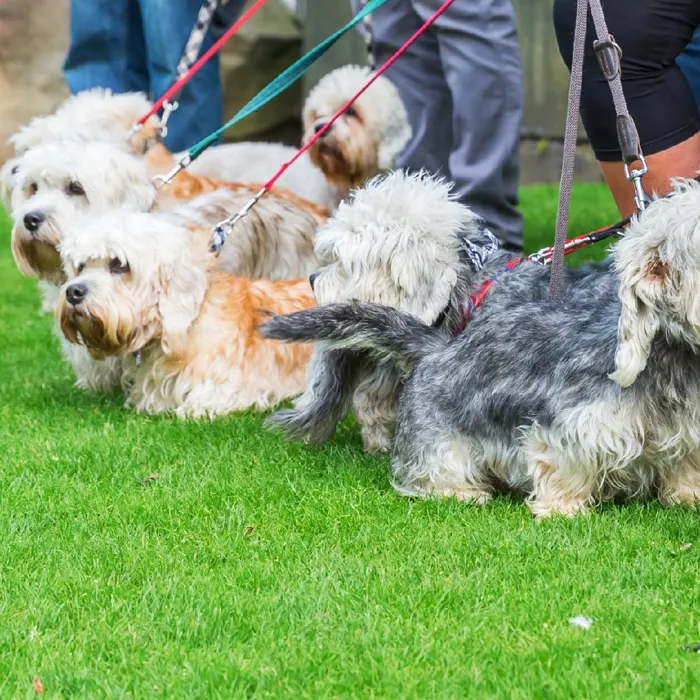Dandie Dinmont Terrier

The unique-looking Dandie Dinmont Terrier is a tough but dignified little exterminator. Sturdily built for the rigors of farm life, they will agreeably adapt to city living. Dandies are compact companions blessed with a big personality.

Ask About Dandie Dinmont Terrier ?
Breed Traits
Group
Terrier
About
History
Standard
Nutrition
Grooming
Exercise
Training
Health
General Appearance
Originally bred to go to ground, the Dandie Dinmont Terrier is a long, low-stationed working terrier with a curved outline. The distinctive head with silken topknot is large but in proportion to the size of the dog. The dark eyes are large and round with a soft, wise expression. The sturdy, flexible body and scimitar shaped tail are covered with a rather crisp double coat, either mustard or pepper in color.
Size, Proportion, Substance
Head
Neck, Topline, Body
Forequarters
Hindquarters
Feet
Coat
Color
Gait
Temperament
All pets have found there homes! Sign up to be notified when new pets are added so you don't miss out.


